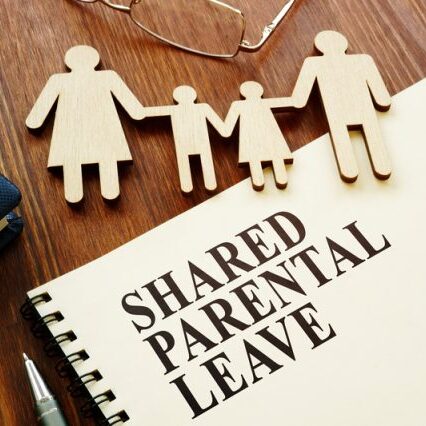SHARED PARENTAL LEAVE

As many of our children and family members are back at school following the summer holidays (my husband included!), I thought this was a timely reminder to looked at shared parental leave – something that is particularly relevant to me at the moment!
We are in the still relatively unusual situation whereby my husband will return to work part time in his role as a Teaching Assistant and I will return full time to running the business much earlier than most would return from maternity leave. In the UK, we would have been eligible for shared parental leave but unfortunately that doesn’t yet apply in the Isle of Man. This would have been hugely beneficial to us as we would have chosen to give me the first 6 months of leave and my husband the second 6 months without having to formally reduce his working hours.
However, there are a number of new policy proposals which were agreed by Tynwald in June 2023 and changes to employment law are already under way with a Bill introduced to the House of Keys to bring in shared parental leave, the right to time off for partners for antenatal appointments, as well as leave for adoption appointments and parental bereavement into force. So while there is a way to go until this is a reality of workplaces on the Island, it is something employers will have to start considering as it is likely to have a big impact on their workforce as well as policies and procedures.
What could SPL look like when it’s introduced?
This month’s blog explores shared parental leave, what it looks like in the UK and what it could mean for employers and employees on the Isle of Man if the new legislation largely mirrors what is in place in the UK.
What is shared parental leave?
Shared parental leave will allow mothers to end maternity leave/pay early so that one or both parents can take leave in a more flexible way during their baby’s first year. Parents can either take time off separately or at the same time.
As with the UK, the first 2 weeks of maternity and adoption leave are compulsory for the birth mother for health and safety reasons (4 weeks if they work in a factory). However, UK law now states that eligible parents can take up to 50 (or 48) weeks as Shared Parental Leave (SPL), and up to 37 weeks of Shared Parental Pay (ShPP).
How much SPL/ShPP leave can be taken?
How much SPL or ShPP eligible parents can take depends on how much leave the birth parent has taken. A common misconception is that people are told by their employer/HR, or even other advisors, that both parents cannot be off and being paid at the same time; this is incorrect.
Employees can take SPL at a different time from their partner/other parent, or at the same time. For example, a woman can be on maternity leave and her partner can be on SPL at the same time. It is also possible for just one parent to take SPL. There is no requirement for both parents to take SPL and indeed, only one parent may qualify to take SPL.
What could this mean for Employers?
Eligible employees may have a statutory right to take Shared Parental Leave and/or Pay if they give the correct notice and meet eligibility criteria.
Shared Parental Leave and Pay helps parents to combine work with family life. They can share up to 50 weeks of leave and up to 37 weeks of pay and/or take their leave and pay in a more flexible way (each parent can take up to 3 blocks of leave, more if their employer allows, interspersed with periods of work).
The leave and pay is ‘created’ when a mother or adopter ends or commits to ending their maternity or adoption entitlement early to opt into the Shared Parental Leave and Pay schemes. Employees will tell the employer if they want to do this and provide certain information to enable the employer to process their ‘request’ for leave and/or pay.
Essentially, what this means for employers is that a much larger proportion of their workforce could become eligible for extended time away from the office following the birth (or adoption) of a child which could have huge ramifications on how businesses function.
What are the benefits of SPL to the employer?
Shared Parental Leave and Pay has benefits for employers, it can;
- Enable mothers and adopters who want to return to work early to do so as their partners are able to share childcare responsibly with them.
- Employees can stop and start Shared Parental Leave and return to work between periods of leave, for example during a particularly busy period or to complete a particular project, if they wish.
- Giving parents more choice and flexibility to combine work with childcare responsibilities means that more parents are able to work in jobs that match their qualifications and experience.
- As an employer, you’ll be able to better recruit and retain talent
For now it’s a case of keeping an eye on the Government’s changes in employment law, as and when they come into force and to think about the potential impact these could have on a business. It is also worth companies starting to draft and consider policies at board level which will be required when changes in law are put in place. If you need help or support with any HR issues, send us an email to julia@zeal.im and we’ll be happy to help.

